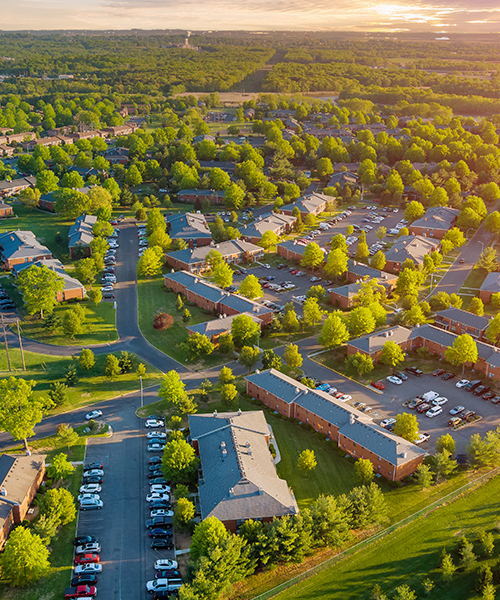
Modern Building Codes:
A Path to Affordable, Resilient Housing
Access to affordable and resilient housing remains a significant challenge for many individuals around the world.
Adopting and implementing modern building codes, like the International Codes® (I-Codes), protects homes and families from extreme weather and other hazards and reduces the cost of living by curbing utility bills, insurance premiums, and repairs and maintenance all without impacting housing affordability.
After Moore, OK, suffered three violent tornadoes from 1999 to 2013 – with the most recent causing $3 billion in damage and 24 fatalities – the city significantly strengthened its building codes. Researchers found that the change to a stronger building code had no effect on the price per square foot or home sales.
NWS forecast Doug Speheger during a damage survey (per source), Public domain, via Wikimedia Commons
The Florida Building Code Story:
Building Safety, Resilience and Affordability
For more than 20 years, the Florida Building Code has helped save lives, protect property and safeguard Floridians’ way of life by improving building resiliency and ensuring that new construction is built to withstand Florida’s challenging climate.
Florida’s experience offers several key lessons for policymakers, builders and community leaders aiming to strengthen their built environment through effective code development and implementation.
Stronger Codes, Stronger Communities
Widespread adoption of modern building codes at the state and local levels can lower construction costs, increase efficiencies for builders and manufacturers and encourage economic investment through minimized risk and reduced borrowing costs for communities.
The Code Council’s I-Codes are the most widely used and adopted set of model codes in the world -- all fifty U.S. states (along with the U.S. Department of Defense) and many other countries have adopted these codes because they protect people and property through streamlined construction best practices. These codes are developed by industry experts as model base codes, that can and are adopted and modified to address specific local needs and priorities.
By establishing standardized, modern building standards, the I‑Codes help not only improve the quality of housing but also create more resilient communities.
Learn more about the Code Council’s codes and standards, here.





